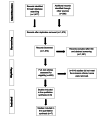The Safety and Efficacy of the Early Use of Sacubitril/Valsartan After Acute Myocardial Infarction: A Meta-Analysis of Randomized Controlled Trials
- PMID: 38465175
- PMCID: PMC10923585
- DOI: 10.7759/cureus.53784
The Safety and Efficacy of the Early Use of Sacubitril/Valsartan After Acute Myocardial Infarction: A Meta-Analysis of Randomized Controlled Trials
Abstract
Acute myocardial infarction (AMI) is a significant global cause of mortality, necessitating the exploration of innovative treatments against the condition. Angiotensin receptor blockers (ARBs), angiotensin-converting enzyme inhibitors (ACEIs), and angiotensin receptor-neprilysin inhibitors (ARNIs) such as sacubitril/valsartan have demonstrated promise in managing acute heart failure (HF). However, despite favorable evidence from clinical trials for the use of sacubitril/valsartan in AMI, its overall efficacy remains a subject of debate. Hence, we conducted this review and meta-analysis, by adhering to the Preferred Reporting Items for Systematic Reviews and Meta-Analysis (PRISMA) guidelines and aligned with European Society of Cardiology recommendations, to compare sacubitril/valsartan with traditional ACEI/ARB treatments for AMI. We employed Review Manager 5.4 for statistical analysis, the Risk of Bias Tool 2.0 was utilized for quality assessment, and publication bias was assessed using a funnel plot. A p-value <0.05 was considered statistically significant. Eight randomized controlled trials (RCTs) were included in this meta-analysis. Our findings revealed that participants treated with sacubitril experienced significantly improved outcomes in terms of HF (OR=0.79; 95% CI: 0.66-0.95; p=0.01; I2=23%), N-terminal pro-B-type natriuretic peptide (NT-proBNP) levels (MD = -1.58; 95% CI: -1.78 to -1.37, p<0.00001; I2=97%), and major adverse cardiovascular events (MACE) (OR=0.84; 95% CI: 0.72-0.99; p=0.03; I2=44%). However, left ventricular ejection fraction (LVEF) (MD=3.68; 95% CI: 3.35-4.01, p<0.00001; I2=71%) showed greater improvement in the control group compared to the experimental group. Our meta-analysis suggests that sacubitril offers a favorable balance between safety and effectiveness. Sacubitril significantly improved outcomes in terms of HF, MACE, and NT-proBNP levels when compared to the control group. However, improvement in LVEF was notably higher in the control group over the sacubitril/valsartan group.
Keywords: acute myocardial infarction; early use; efficacy; meta-analysis; randomized controlled trials; sacubitril/valsartan; safety.
Copyright © 2024, - et al.
Conflict of interest statement
The authors have declared that no competing interests exist.
Figures








Similar articles
-
The Efficacy of Angiotensin Receptor-Neprilysin Inhibitor Versus Angiotensin-Converting Enzyme Inhibitor or Angiotensin Receptor Blocker Post Myocardial Infarction: A Meta-Analysis.Cureus. 2023 Oct 5;15(10):e46547. doi: 10.7759/cureus.46547. eCollection 2023 Oct. Cureus. 2023. PMID: 37933369 Free PMC article. Review.
-
Effect of sacubitril-valsartan on left ventricular remodeling in patients with acute myocardial infarction after primary percutaneous coronary intervention: a systematic review and meta-analysis.Front Pharmacol. 2024 May 28;15:1366035. doi: 10.3389/fphar.2024.1366035. eCollection 2024. Front Pharmacol. 2024. PMID: 38863978 Free PMC article.
-
The efficacy and safety of sacubitril/valsartan compared with ACEI/ARB in the treatment of heart failure following acute myocardial infarction: a systematic review and meta-analysis of randomized controlled trials.Front Pharmacol. 2023 Aug 4;14:1237210. doi: 10.3389/fphar.2023.1237210. eCollection 2023. Front Pharmacol. 2023. PMID: 37601056 Free PMC article.
-
The benefits of sacubitril-valsartan in patients with acute myocardial infarction: a systematic review and meta-analysis.ESC Heart Fail. 2021 Dec;8(6):4852-4862. doi: 10.1002/ehf2.13677. Epub 2021 Oct 30. ESC Heart Fail. 2021. PMID: 34716749 Free PMC article.
-
Therapeutic effects and safety of early use of sacubitril/valsartan after acute myocardial infarction: a systematic review and meta-analysis.Ann Palliat Med. 2022 Mar;11(3):1017-1027. doi: 10.21037/apm-22-210. Ann Palliat Med. 2022. PMID: 35365031
References
-
- Wu JC. Essential Echocardiography. Vol. 2. Amsterdam, Netherlands: Elsevier; 2019. Acute myocardial infarction; pp. 195–199.
-
- Fourth universal definition of myocardial infarction (2018) (Article in Polish) Thygesen K, Alpert JS, Jaffe AS, et al. Kardiol Pol. 2018;76:1383–1415. - PubMed
-
- World Health Organization definition of myocardial infarction: 2008-09 revision. Mendis S, Thygesen K, Kuulasmaa K, Giampaoli S, Mähönen M, Ngu Blackett K, Lisheng L. Int J Epidemiol. 2011;40:139–146. - PubMed
-
- Impact of delay to reperfusion on reperfusion success, infarct size, and clinical outcomes in patients with ST-segment elevation myocardial infarction: the INFUSE-AMI Trial (INFUSE-Anterior Myocardial Infarction) Guerchicoff A, Brener SJ, Maehara A, et al. JACC Cardiovasc Interv. 2014;7:733–740. - PubMed
Publication types
LinkOut - more resources
Full Text Sources
Research Materials
Miscellaneous
